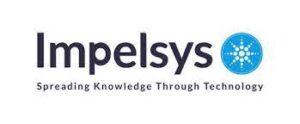Measuring eLearning Effectiveness: Metrics That Matter

Why Measuring eLearning Effectiveness Matters
With the right Key Performance Indicators (KPIs) and analytics in place, businesses can evaluate how well their custom eLearning development efforts are paying off—and where there’s room to improve. This article explores the metrics that truly matter when it comes to measuring eLearning effectiveness and the success of your eLearning creation initiatives.
Before diving into specific metrics, it’s important to understand the “why.” Measuring the effectiveness of your Learning and Development solutions helps to:
- Ensure alignment with business goals.
- Identify gaps in knowledge or engagement.
- Improve course design and learner experience.
- Demonstrate ROI to stakeholders.
- Optimize future LMS course creation.
Without tracking the right data, organizations risk wasting time, money, and effort on programs that may not deliver the expected results.
Top Metrics To Track When Measuring eLearning Effectiveness
1. Learner Engagement Rates
One of the first indicators of a successful eLearning solution is how engaged your learners are. Engagement can be tracked through:
- Completion rates.
How many learners finish the course? - Drop-off rates.
Where do learners tend to exit? - Time spent per module.
Are learners rushing through or taking their time? - Repeat visits.
Do learners return to review content?
Low engagement might indicate that your custom eLearning development needs to be more interactive, visually stimulating, or personalized.
2. Knowledge Retention And Assessment Scores
Training isn’t effective if learners can’t remember or apply what they’ve learned. Assessments—both formative and summative—are vital to evaluating:
- Pre- and post-assessment scores.
- Quiz results by topic/module.
- Long-term retention via follow-up assessments.
Tracking these analytics can guide improvements in eLearning creation and help identify concepts that need to be reinforced.
3. Course Feedback And Learner Satisfaction
Surveys and feedback forms offer qualitative insights that numbers alone can’t provide. Learners can rate their experiences with:
- Course structure and flow.
- Content relevance and clarity.
- Usability and accessibility.
- Visual design and multimedia elements.
Using this feedback in your custom eLearning solutions helps foster a learner-centric approach and supports continuous improvement.
4. Behavior Change And On-The-Job Performance
One of the most important but often overlooked metrics is how well the training translates into real-world performance. You can measure this by:
- Monitoring changes in Key Performance Indicators on the job.
- Supervisor evaluations or 360-degree feedback.
- Tracking specific behaviors targeted in training (e.g., sales conversions, safety compliance)
This data can often be correlated through integrations between learning management software and business systems like CRM or HR platforms.
5. Return On Investment (ROI)
Understanding the ROI of your custom eLearning development helps you justify your training spend and secure future investment. ROI can be calculated by comparing:
- Cost of course development + platform usage.
- Time saved (e.g., reduced travel or classroom time).
- Improvement in employee performance or business outcomes.
For instance, if your sales team undergoes a product training course and sales increase by 15%, that’s a tangible ROI linked to eLearning solutions.
6. Learner Progression And Certification
Tracking learner progression through levels, courses, or certifications is another key metric, especially for compliance-driven industries. Metrics include:
- Badge or certificate acquisition.
- Time taken to achieve mastery.
- Progression across a curriculum path.
This data is essential in LMS course creation where learning journeys are often structured around skill trees or compliance requirements.
7. Platform And Content Analytics
Technical metrics from your learning management software or content tools can provide additional insights:
- Device and browser usage
- Content load times and error rates
- Accessibility compliance (e.g., screen reader usage)
- Interaction heatmaps for video or animation
Understanding how learners interact with the technology itself can influence future eLearning creation and even inform decisions on eBook conversion for mobile-first experiences.
8. Organizational Impact
Finally, consider the broader business impact of your training program. Some examples include:
- Faster onboarding for new hires.
- Improved customer satisfaction scores.
- Reduction in compliance violations.
- Increase in internal promotions.
These indicators showcase how Learning and Development solutions contribute directly to organizational goals, making a strong case for continued investment in custom eLearning solutions.
Tools That Help You Measure Success
To track and analyze these metrics effectively, consider using tools like:
- Learning Management Systems with built-in analytics.
- SCORM-compliant tracking for granular insights.
- xAPI (Experience API) for capturing data across multiple platforms.
- HRIS or performance management systems for linking training to outcomes.
Combining data from these tools helps paint a comprehensive picture of how well your eLearning solutions are performing.
Final Thoughts
Creating a successful eLearning program involves more than just compelling content—it requires ongoing measurement, analysis, and optimization. By focusing on the right KPIs and leveraging modern analytics, organizations can maximize the impact of their custom eLearning development efforts. Whether you’re planning a new eLearning creation project, considering eBook conversion, or looking to enhance your existing learning management software, understanding the metrics that matter will ensure you build training that drives real results.
Source link




